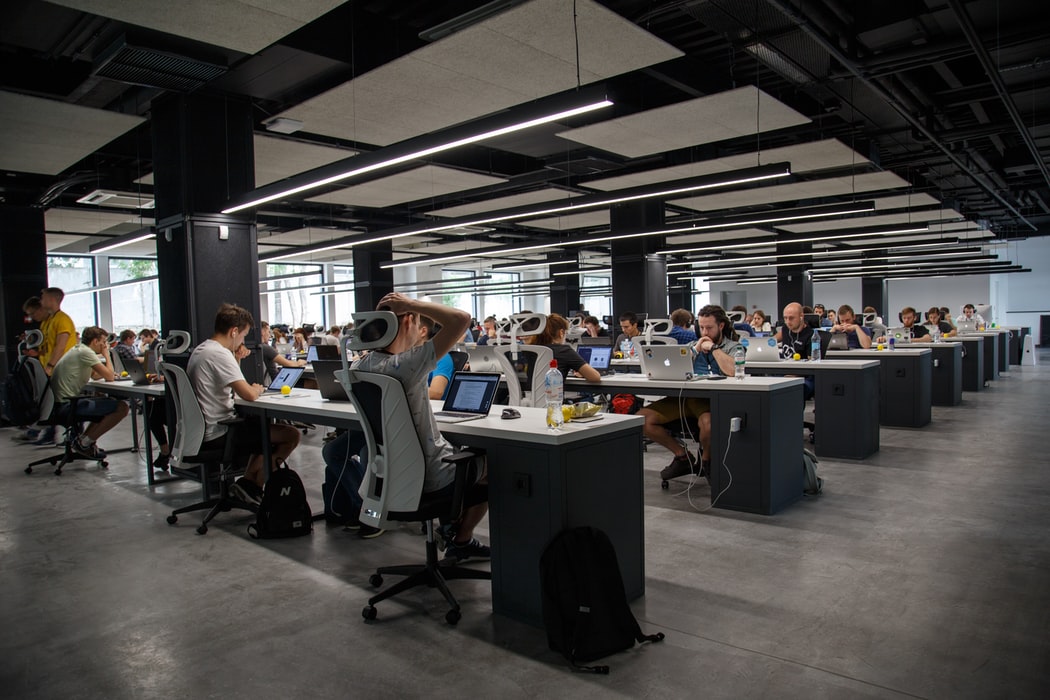
Employees today want their work to be remote, flexible, and adaptable. To that, they are even re-evaluating if they should continue with their jobs based on the flexibility it affords them. For perspective, a whopping 59% of respondents revealed in a survey that they would consider a new job if they were allowed to work remotely. What’s more, 64% of them would work at a place that allowed flexible work timings too.
Remote work has seen increased acceptance over the past two years due to its focus on flexibility and safety. However, remote working has had a staggering mental health impact for most employees. For some, the experience has been isolating. Hence, employees now prefer a mix of in-office and remote work to balance their mental health and office responsibilities. No wonder organizations are transitioning to a hybrid model of work, combining the best parts of in-office and remote work.
In-Office Seating: A Challenge of a Flexible Hybrid Workplace

One of the biggest challenges organizations will encounter while transitioning to a flexibility-first hybrid model is office seating. Why? Because the employee office footfall will be dependent on work schedules and employee preferences and in line with physical distancing protocols. Naturally, in-office seating will need to be dynamic without compromising space usage, and facility managers will have to take care of it.
Thanks to technology, companies can now deploy desk management software that helps manage in-office seating in a flexible set-up through automation. Here is how it helps.
How Desk Management Software Can Help Increase Workplace Flexibility

-
Employees Can Choose Their Preferred Desks in Advance With Desk Management Software
A fully-flexible workplace prioritizes employee work needs. And this includes seating. Whether an employee prefers desks that are free from distractions or an open space to do their best work, they can book a desk in advance through the desk-hoteling service of desk management software. The software has a dedicated dashboard that includes all the available desks with their locations. This helps employees choose their preferred seating ahead of time irrespective of whether they are in-office or remote-worker.
What’s more, they can use the detailed office floor plan to find their seating arrangements without the hassles. Safe to say, desk management software reduces the desk searching time of the employees, thereby increasing employee productivity.
-
Employees Can Book Desks and More According to Availability With Desk Management Software
There could be several instances when employees might want to book desks on the go and not block out an entire slot for it. For example, when employees have meetings lined up between work time, when they want to collaborate with a team on a project, etc. Whatever the reason, employees can choose between available desks and shared working areas with desk management software.
Desk management software usually comes with hot-desking facilities that allow employees to book desks on a first-come-first-serve basis. Similar to desk-hoteling, they can choose their work area with ease. However, they do not need to commit to it for a set time. This means employees can shift between desks for a change of scenery if it helps their productivity. Moreover, they can build better connections with their coworkers along the way.

-
Desk Management Software Can Accommodate Employee Shifts
During the pandemic, many organizations introduced staggered shifts to increase employee health safety in-office. However, this has turned managing desk allotment manually into a facilities management nightmare. The reason? Facility managers are struggling to keep track of desk utilization due to the dynamic nature of staggered shifts. Thankfully, desk management software can automate this entire process.
Desk management software often has sensors to keep track of desk occupancy. So, if an employee vacates a desk, it is recorded automatically in the system. This saves the time facility managers spend on checking desk occupancy manually. What’s more, the software also reduces the waiting time required to book a desk dramatically due to automation.
-
Desk Management Software Can Maintain Seating Flexibility Without Compromising on Safety
A fully-flexible office workplace must ensure that employees can choose their workspace without compromising health security. And desk management software makes sure of it. For one, they allow facility managers to deem certain desks available in line with physical distancing protocols. This reduces the extra care employees have to take to ensure they follow the guidelines while working.
Some desk management software even ensures work desks get sanitized before a new desk allotment. How? The sensors attached to the system send notifications to the sanitization staff when a desk is vacant. This ensures health safety while saving the waiting time to book a new desk.

-
Desk Management Software Helps in Space Planning for Adaptable Workplace Seating
For office workspaces to be truly flexible, they must change as per employee preferences. Sometimes, it may mean remodeling office seating to improve employee productivity. Although the burden of this task usually falls on the facility manager, desk management software makes it easier.
Desk management software gives insights on employee desk usage, including which desks they prefer and which areas go unused, among other things. With this knowledge, facility managers can remodel the office space to ensure optimal desk utilization. Additionally, they can save the rent the office spends on unutilized space too.
To Conclude
Desk management software allows for flexible seating in the workplace in line with employee preferences. They also help facility managers optimize the office space to accommodate different working needs while prioritizing employee health safety.
Still, facility managers should consult employees before making any drastic changes in the workplace. After all, this helps create a flexible workplace that truly centers around employees’ needs. With WorkInSync’s suite of hybrid work solutions, transition into a flexible workplace easily.
















